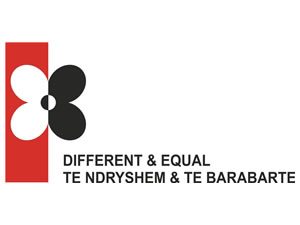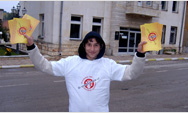Shelter Helps Albania’s Trafficking Victims Re-Build Lives
At the Different & Equal (D&E) shelter, Tirana’s only long-term shelter for trafficking victims, 15-year-old Marta is able to access a personal counselor, resume her education, and learn vocational skills to successfully reintegrate into society. D&E was founded with assistance from USAID’s The Albanian Initiative: Coordinated Action Against Human Trafficking (CAAHT) and employs six social workers, two teachers, a psychiatrist, a driver, an administrative assistant, a job facilitator and an on-call doctor.
“Reintegration is very difficult; there is always the threat of re-trafficking,” said Serije Pepa, a D&E social worker who counsels the shelter’s residents.
No one knows the exact number of victims who are re-trafficked. But stories told to counselors and police by victims reveal that those who have no support system when they return to Albania are highly vulnerable to falling prey, again, to traffickers’ ploys. D&E provides a safe haven for victims, can be a significant deterrent to the risk for re-trafficking.
D&E’s reintegration process involves three phases that lasts over a period of several years. During the initial phase, the shelter is focused on providing each woman with a safe environment and assessing her individual needs. When a young woman is brought to the shelter she is stabilized–provided with a meal and a shower. Many have spent several days being transferred from immigration officials to the border police and finally to the anti-trafficking police and have not had a proper meal nor a chance to wash themselves. Then, they begin intensive counseling. Their psychological and emotional states and level of education and skills are assessed, and a recovery plan is developed.
“Each case is different, so we must mold our techniques to each one,” said Amarielda Nakuci, a D&E social worker who works directly with shelter residents. “When women arrive at the shelter, they are pessimistic—they think everything is over. Most have suffered emotional and physical abuse. They have poor speech, and are very confused. They’re dependent and act on others’ decisions.”
Like many trafficking victims, Marta was unaware of the tactics that traffickers used on girls like her. “I didn’t know they were traffickers,” she said. “We had been neighbors and I didn’t know what they did, I didn’t see them very often. They behaved politely.”
After her father’s death when she was 14, life at home with her mother and an older, domineering brother became unbearable. Marta ran away and spent a few weeks living with a friend. She then met two former neighbors who promised to take her to Greece to join a cousin who was living there. In Greece, however, she was forced to work as a prostitute.
“When asked what they want to talk about, the girls want to know why they had to live through such an experience, why it happened to them,” said Pepa. “When you listen to them, they tell horrible stories.”
In Marta’s case, she was first held by the Greek police and transferred to various authorities until reaching the Albanian anti-trafficking police which sent her to D&E. In general, victims are referred to D&E by the police, other temporary shelters and sometimes religious organizations who take in victims. CAAHT helped gather organizations that work in anti-trafficking so they could share their expertise and form a reciprocal referral network to direct trafficking victims to appropriate social services.
 |
| Different & Equal (D&E) shelter logo |
Arriving at the shelter is just the beginning of the long journey that victims face to rebuild their lives.
“It’s a long process to independence; clients have to learn how to manage finances, communicate, perform basic housekeeping,” said Pepa. “If I think about it, my own daughter is 14 and she doesn’t know how to do these things. She doesn’t cook, manage her finances, why should these girls? They are very young also.”
On average, a client’s first phase of reintegration takes six months to a year, although minors such as Marta can remain in the care of D&E at its shelter until they reach 18. In phase two of the reintegration process, clients are helped in finding jobs and are coached about the interview process and employers’ expectations. During the second phase, clients move to D&E’s halfway apartments for a year, maintaining daily contact with shelter staff. Outsiders, even family members, are not permitted in the apartments and the young women have a curfew.
After a year in the halfway apartment, the young women must find their own apartments, which will may subsidized by the shelter for the first three months. Reintegrated clients sometimes maintain contact with shelter staff members who become like family.
“But we [D&E social workers] discuss how to greet clients who have left the shelter. We have decided that if we run into them, we don’t initiate contact but let them do so,” Nakuci explains. “I had a case. She is now at the Faculty of Social Work. I sometimes see her, we do not talk, she chooses not to, but I think we both feel good about her progress. She is a successful case.”
Asked what she now fears most, Marta laughs again and answers, “I fear only God.” Marta also says that during the period she was being trafficked in Greece, she kept herself going by thinking that if she only could call someone they would help her.
“She’s very optimistic,” adds Pepa, smiling.
Back to Top ^ |


